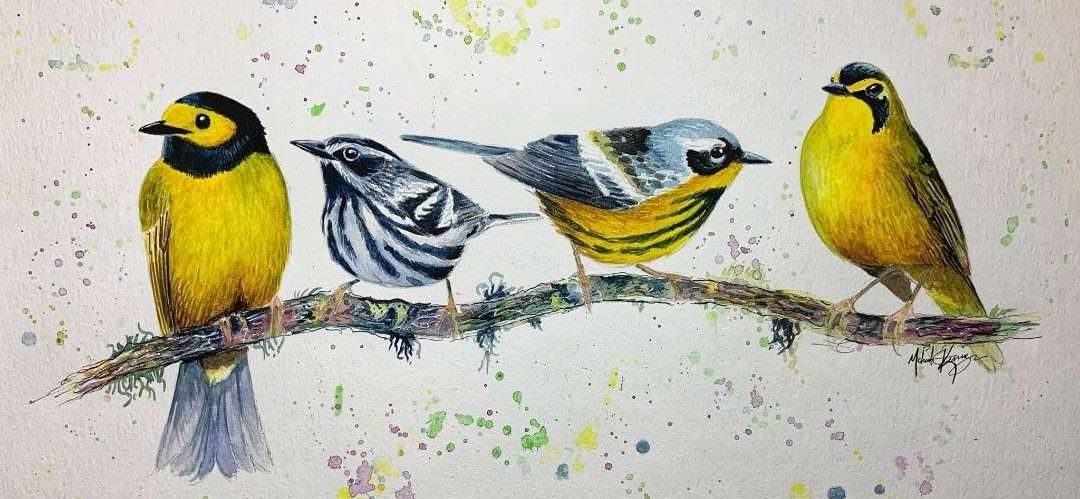 Golden-winged Warblers are one of Pennsylvania’s most beautiful songbirds, but this secretive warbler is in trouble, partly due to habitat loss in its breeding range right here in Pennsylvania.
Golden-winged Warblers are one of Pennsylvania’s most beautiful songbirds, but this secretive warbler is in trouble, partly due to habitat loss in its breeding range right here in Pennsylvania.
We know that many people are interested in knowing more about Golden-winged Warblers, so Juniata Valley Audubon Society has partnered with Audubon PA and Penn State Altoona to do a two-day workshop on the identification, biology, and conservation of these beautiful birds. The free workshop, which we are calling the Golden-winged Warbler Weekend, will be held on Friday and Saturday, April 10 – 11, 2015 at the Penn State Altoona campus.
Our speakers will share their research on the biology and habitat needs of Golden-winged Warblers in Pennsylvania, as well as in Honduras, where many Golden-winged Warblers spend their winter. On Saturday afternoon we will have interactive sessions so participants can choose between programs that address conservation work in Pennsylvania or conservation programs in Honduras.
The Vice-President of Juniata Valley Audubon Society, Dr. Mark Bonta, is active in bird conservation programs in Honduras. He has connections with researchers in Honduras, as well as Honduran conservationists, who need our help in protecting Golden-winged Warblers on their winter range. We hope to form a coalition of volunteers who are willing to promote conservation projects in Honduras. Saturday’s afternoon session will provide details on how we can take those critical steps toward forging international connections. Private forest landowners are also encouraged to attend the conference, as details will be share on funding that is available for habitat conservation work on private lands using WHIP funding through NRCS.
You can attend the free programs on just one, or both days. The only charge will be for the Golden-winged Warbler Dinner Party, which is a buffet held at Marzoni’s Brick Oven & Brewing Company near the campus. More details are on the agenda.
 The registration form is located at the bottom of the PDF version of the agenda. Please return the registration portion of the agenda, if you are interested in attending, as well as payment for the dinner party, if you plan to join us for dinner. Please mail the registration form and dinner payment to Laura Jackson as soon as possible: [email protected]
The registration form is located at the bottom of the PDF version of the agenda. Please return the registration portion of the agenda, if you are interested in attending, as well as payment for the dinner party, if you plan to join us for dinner. Please mail the registration form and dinner payment to Laura Jackson as soon as possible: [email protected]
We look forward to meeting you at the workshop. It should be a great opportunity to learn more about Golden-winged Warblers and how we can help keep them off the Endangered Species List.


 Reservation and payment are due by Tuesday, Nov. 18 if you’d like to join us for the Christmas Bird Count supper on December 20. We’ll be meeting at 5:30 at
Reservation and payment are due by Tuesday, Nov. 18 if you’d like to join us for the Christmas Bird Count supper on December 20. We’ll be meeting at 5:30 at 
 What???? It’s true, we are spending thousands of dollars each year to print and mail
What???? It’s true, we are spending thousands of dollars each year to print and mail 

